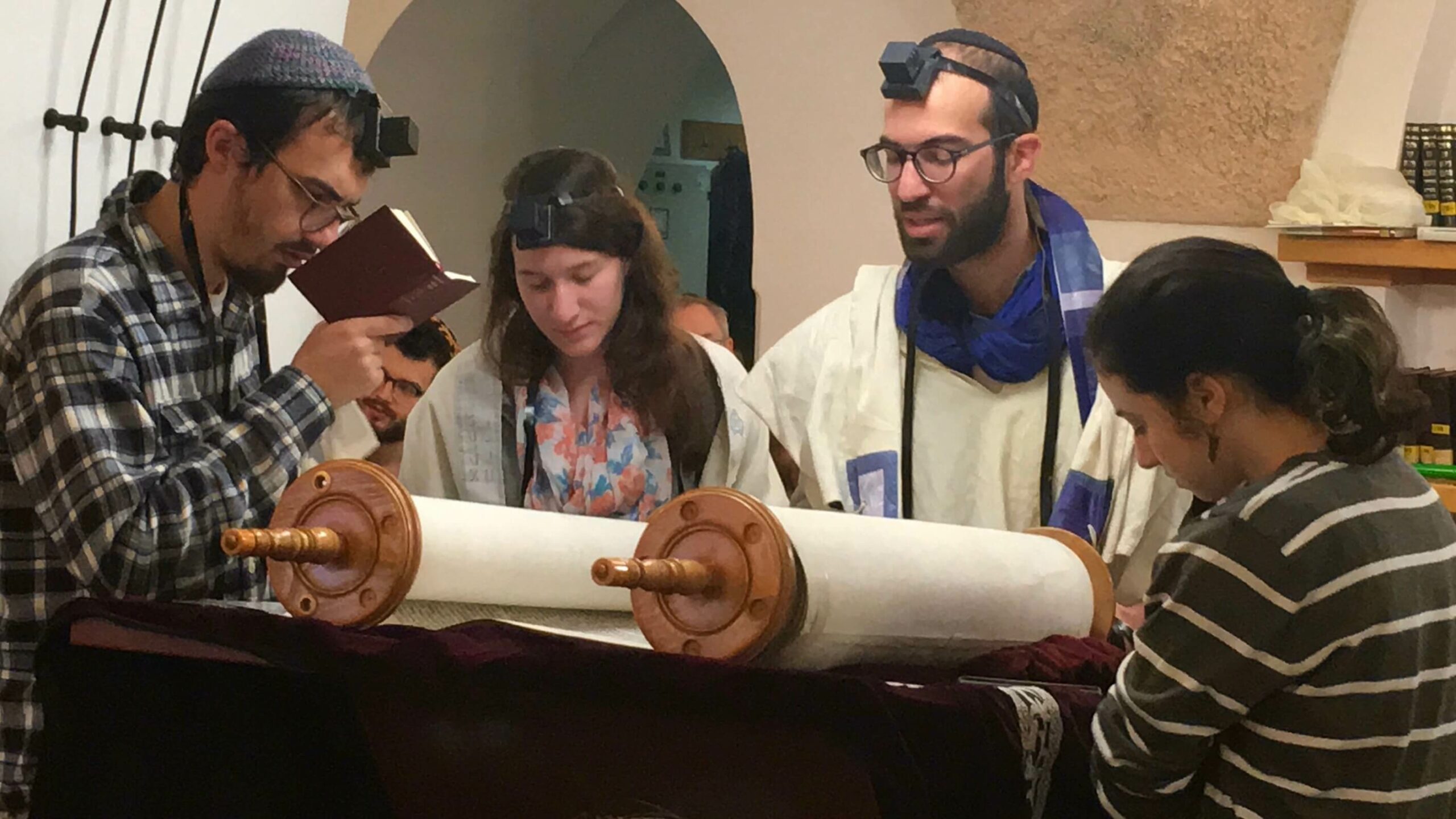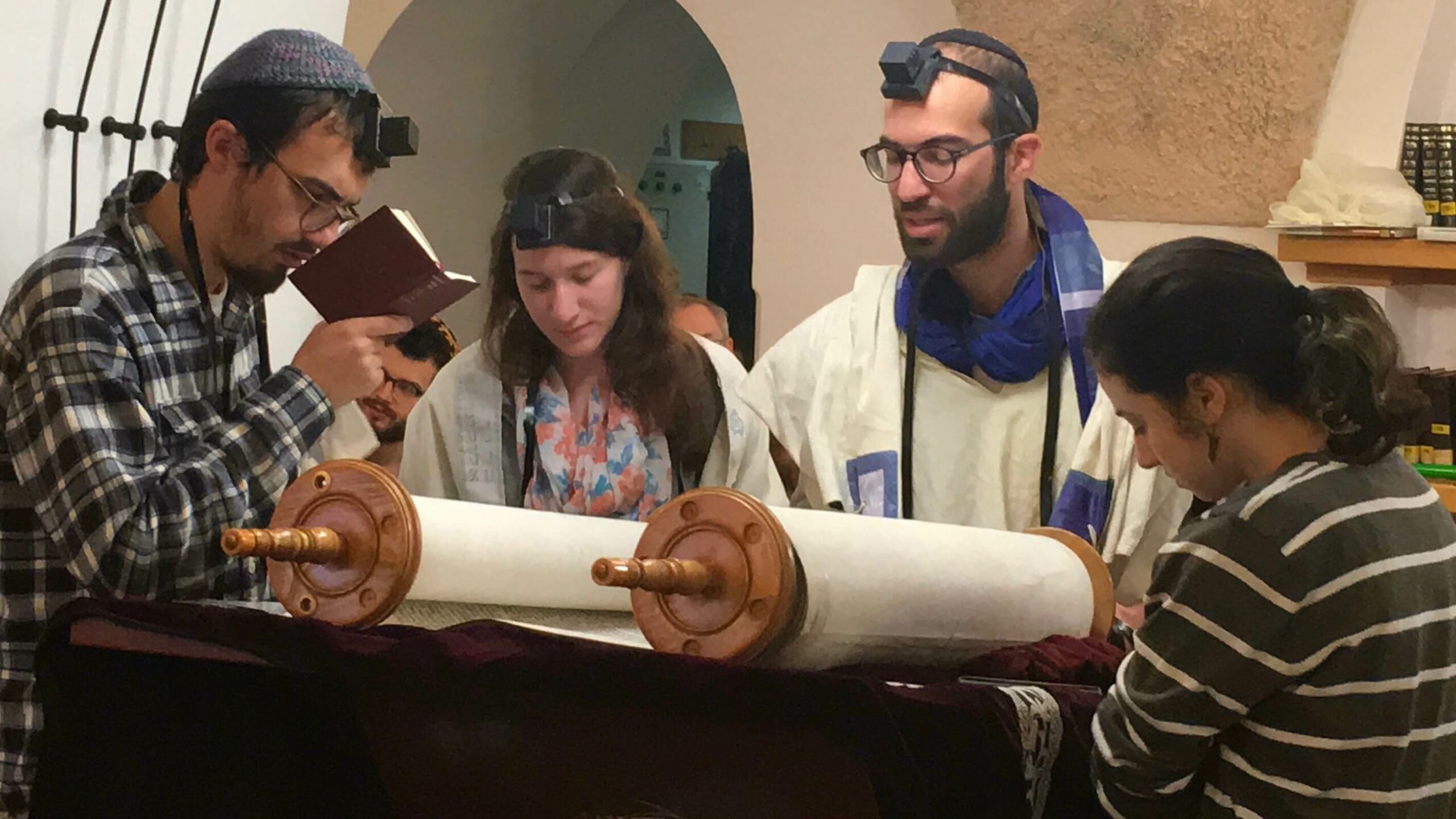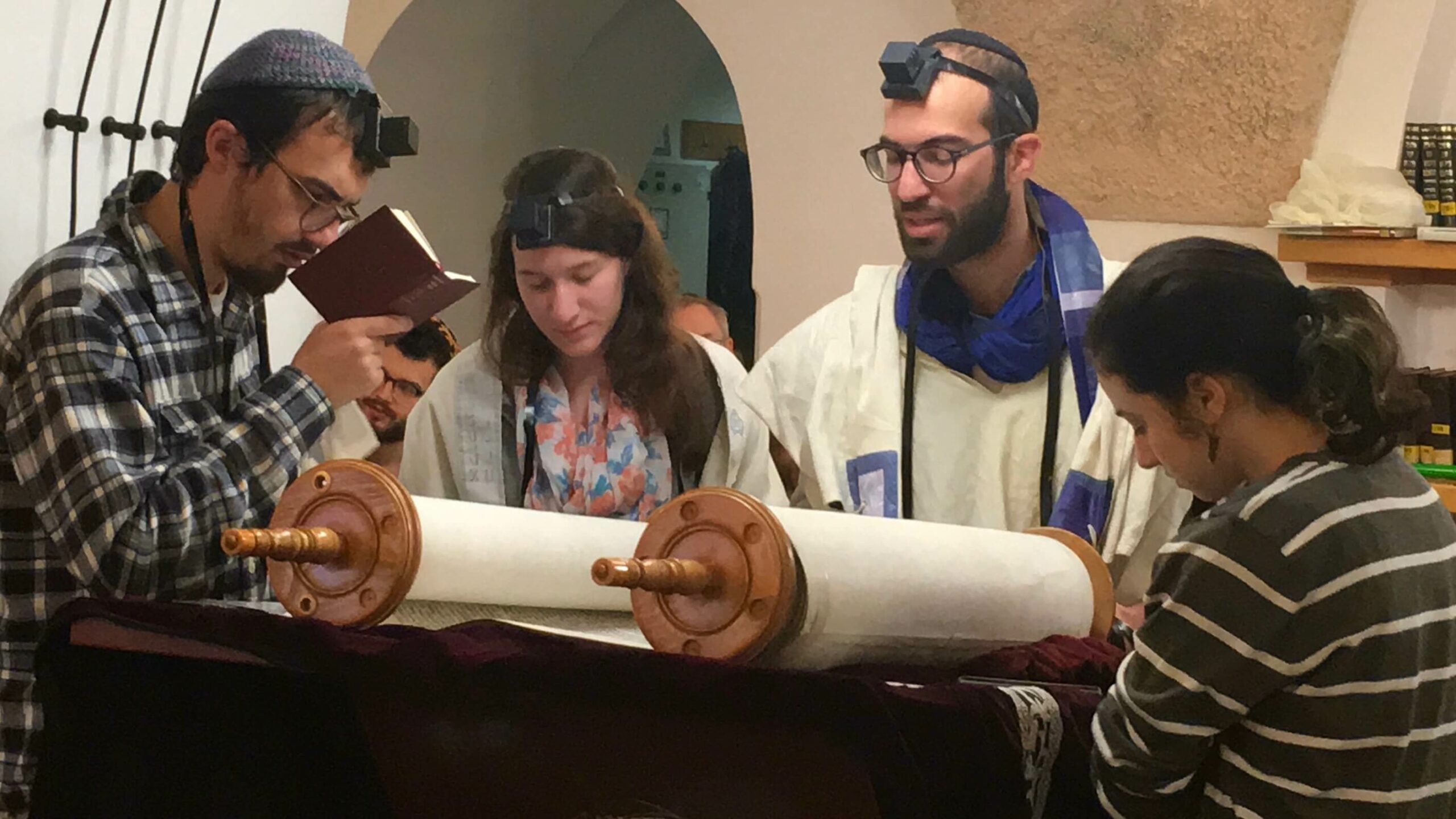

TORAH SPARKS (Print friendly version)
7th Day of Pesach
April 7, 2018 | 22 Nisan 5778
Annual | Deuteronomy 14:22-16:17 (Etz Hayim p. 1080-1084; Hertz p. 814-818)
Maftir | Numbers 28:19-25 (Etz Hayim p. 932; Hertz p. 695-696)
Haftarah | Isaiah 10:32-12:6 (Etz Hayim p. 1316-1319; Hertz p. 1023-1026)
D’var Torah: Order at Yam Suf
Ilana Kurshan, Conservative Yeshiva Faculty
The Torah reading for the seventh day of Pesach depicts one of the most climactic moments in the story of the exodus: The Israelites enter the Red Sea and great walls of water rise up on both sides, creating a path of dry land. The Egyptians, hot on their trail, rush into the sea as well, only to drown in the waters that close in upon them. But the Torah omits a few key details: Did the Israelites turn around and witness the terrible human catastrophe behind them? Could they see the Egyptians gasping for breath, their horses buckling and their chariot wheels screeching to a grinding halt? Or did the people of Israel have their sights firmly fixed on the path before them, believing steadfastly and unwaveringly in God and Moshe His servant? And when exactly did they begin to sing the Song of the Sea: After they had already crossed the sea and they were assured of their victory? Or while they were still passing through, at a time when their fate still very much hung in the balance?
According to Sforno (Italy, 1475-1550), the Israelites were still walking through the split sea at the moment when they began to sing. As Sforno puts it in his commentary on Exodus 15:19, “The Song of the Sea occurred when Pharaoh’s horses went in with his chariots and horsemen into the sea, and God, the Blessed One, drowned them while the Children of Israel were still walking on the dry land in the midst of the sea. Before they came out they began to sing.” Avivah Zornberg points out that according to this reading, Shirat Hayam was not a victorious exaltation, but rather an expression of deep faith. At the time when the Israelites began singing, they still did not know that they would survive. For all they knew, the waters that had begun to engulf the Egyptians would then creep up upon them. After all, they were used to a Pharaoh who was notorious for his changes of heart; why should their new Ruler be any different? And yet they believed in His steadfastness, at least enough to begin singing a song of thanksgiving even before there was anything concrete for which to be grateful.
But I wonder if we might read Sforno a bit differently. Perhaps the Israelites (led first by Moshe, and then by Miriam) were not singing out of faith in God; they were rather singing as a way of “drowning out” the sounds of disaster behind them. As the Egyptians were crying out in utter horror, the Israelites were trying to impose some sense of order amidst the chaos. And so they sang out in measured, crafted speech –i.e. poetry—as a way of creating order in the midst of the mighty waves and gales engulfing the Egyptians who stood just behind them. The scene recalls the moment in Madeleine L’Engle’s A Wrinkle in Time when Meg recites the multiplication tables in the face of IT: When confronted with horror, a person copes by creating a different rhythm, any rhythm that is not the rhythm of the horror. Indeed, perhaps it was their very singing that delivered the Israelites, in a performative utterance: The people sang that “He cast Pharaoh’s chariots and his army into the sea,” and lo and behold, God cast Pharaoh’s chariots and his army into the sea. And then they sang “You made the wind blow; the sea covered them,” and lo and behold, the wind blew and the sea covered them. Their very expression of faith was what enabled God to stretch out his mighty hand and bring His people forth on dry land.
At its most triumphant moment, the Song of the Sea proclaims, “The Lord will reign for ever and ever,” and for just that moment it seems like it is so. As we chant the song celebrating the miraculous splitting of the sea in our still unredeemed world, may our words bring us that much closer to the more ordered world in which God’s eternal reign will be manifest.
For Discussion: Three models of prayer are presented: 1) prayer as an expression of gratitude for good already experienced, 2) prayer as a reassuring statement of faith in the midst of uncertainty, and 3) prayer as a defiant attempt to speak a better reality into existence. To which model do you most relate?
7th Day of Pesach Self-Study
Vered Hollander-Goldfarb, Conservative Yeshiva Faculty
On the Seventh Day of Pesach, we read about a monumental event that, according to tradition, took place on that day: Crossing the Red Sea (Yam Suf). Our reading (Exodus 13:17-15:26) starts the story of the Israelites at the point that they had left Egypt.
1. Heading into the desert without any guarantees took a leap of faith on the part of the people of Israel. Still, God chose not to put them to the test more than necessary. What test was avoided by travelling by the longer route that did not follow the coast (Shemot 13:17-18)?
2. Traveling in the desert could cause some anxieties for those who were not accustomed to it. What might their fears be? Which of these fears might the pillar of cloud/pillar of fire alleviate? What was the declared purpose of the pillar of cloud/fire (13:21-22)?
3. When the people discover Pharaoh and the Egyptian army behind them, there are at least 3 reactions reported in the Torah (14:10-12). What reactions do you expect the people to have? Read in the Torah, what 3 of reactions did you find? (Read the 3 verses slowly and you will notice that there are at least 3 different reactions.)
4. The people of Israel were trapped between the sea and the Egyptian army. The pillar of cloud separates the two camps (14:19-20), but the Egyptians do not seem to try to push forward to force the fleeing Israelites into the sea. What might we understand about the reason that the Egyptians gave chase by their behavior here?
5. After the horrors and miracles of the night, as the Israelites stood safely on the other side of the sea and the Egyptians were gone, Moshe expresses the feelings of awe and amazement in a long poem. But he is not the only one leading an inspired reaction to the events. So does his sister, Miriam (15:20-21). How does her response differ from Moshe’s? Who shares in her response? Why do you think that the Torah responses both reactions?
D’var Haftarah: The Song of David
Rabbi Mordechai Silverstein, Conservative Yeshiva Faculty
David, great king and leader though he was, did not have an untroubled life. He had numerous enemies and lived through many life-threatening crises. It is not surprising, then, that when he assessed the events of his life, he would compose a song of praise to God celebrating his triumph over adversity. The choice of language in this “Song of David” is picturesque and its description of God’s assistance in overcoming his crises is “mythic” in its description: “The earth heaved and quaked, the heavens’ foundations shuddered, they heaved, for He (God) was incensed. Smoke went up from His nostrils, consuming fire from His mouth, coals before Him blazed. He tilted the heavens, came down, dense mist beneath His feet. He mounted a cherub and flew, He soared on the wings of the wind.” (22:8-11) God’s rescuing “hand” seemingly caused earthly upheaval.
Should we take these descriptions literally or figuratively? Rashi (France, 1040-1105) takes these descriptions literally but notes that they do not describe events in David’s life but rather events in the life of the people. Rabbi David Kimhi (Provence, 1160-1235), however, asserts that David’s words are figurative or poetic descriptions of God’s saving grace.
What is at the crux of this debate? The rabbinic sages debated over the nature of the miraculous and what constitutes a miracle. On the one hand, the greatest miracle of all was the orderly creation of the world and anything that would corrupt this order was anything but a miracle. On the other hand, how could one stay God’s hand and say that He does not have the power to alter the nature of things. Rashi takes the latter view but wants to limit its expression in the world to major things. Kimhi sees the miracles in the natural order. For him, miracles are in the eyes of the beholder, an expression of thanksgiving for blessings when they are bestowed.
We moderns are troubled by the very idea of miracles. If something cannot be verified or replicated, we have trouble accepting its truth. Kimchi’s assessment of David’s words gives us another avenue of how to view the miracle and how to assess truth. There are different ways of looking at the world and evaluating the significance of the events in our lives. Perhaps, the eyes of the poet also have much to offer us in this regard.
For Discussion: How do you understand the idea of miracle? Does it make sense to speak of personal miracles, or should the term/idea be reserved for rare history-altering events? Are things “objectively miraculous” or are they “miracles” only because of how we choose to see them?








